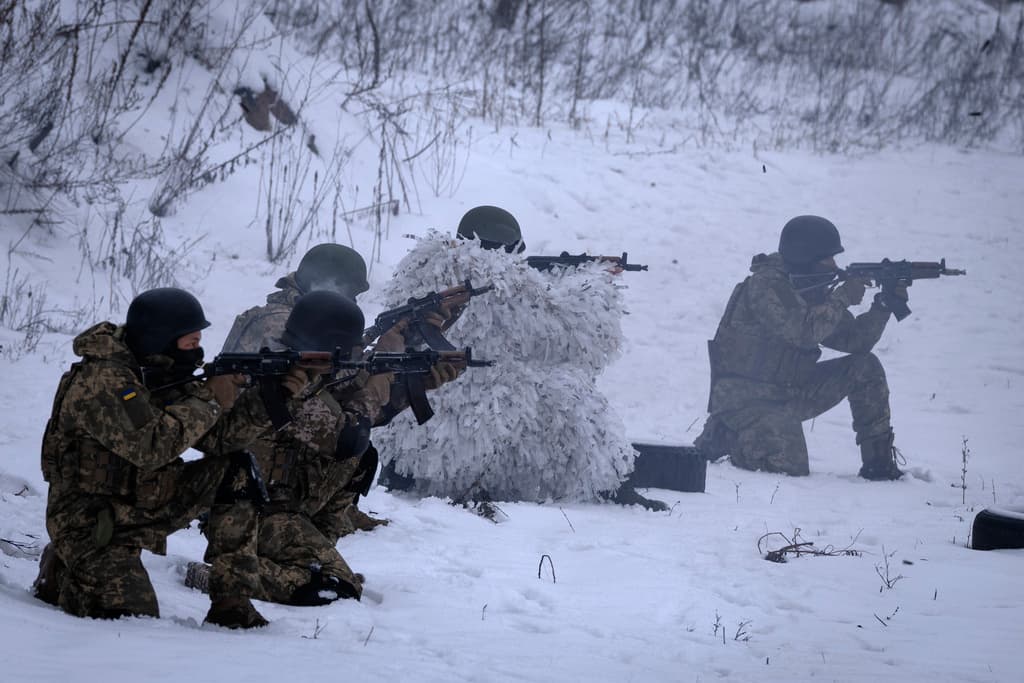Putin, After Re-Election Hoopla, Faces the Question That Worried the Tsars: How Does One Defend World’s Largest Country?
Armed exile units taking the fight into Russia in the largest military incursion since World War II.

It was supposed to be an election weekend sideshow. Now, it is a big thorn in the side of Russia’s newly re-elected president.
One week ago, armed units of three Russian exile groups crossed into Russia from Ukraine. The assumption was that they would shoot up border posts, pose for selfies, denounce Mr. Putin’s stage -managed vote, and then go home.
One week later, they constitute the largest military incursion into Russia since World War II. In a 75-mile arc in Belgorod region, they have taken over — or are fighting for — six border towns: Krasnaya Yaruga, Kozinka, Grayvoron, Gorkovskii, Zhuralevka, and Oktyabrskii. Incursions reportedly are ongoing in two other border regions — Kursk and Voronezh.
Historically, these pancake flat steppes, broken only by tree lines and shallow rivers, are conducive to fast thrusts. In the summer of 1943, they were the setting for the Battle of Kursk, a clash of 10,000 tanks, the largest tank battle in history. No one expects a repeat of that epic Nazi-Soviet fight, but the possibility exists of a Russian rebel breakout.
Beyond a fortified border zone, Russian defenses thin out. Reflecting Kremlin worries about border security, tactical nuclear weapons were removed last year from Belgorod-22, a storage area in Grayvoronsky district. Russian exile troops now are 10 miles from this empty depository.
Twenty five miles east of this fighting, Belgorod city is pounded daily — including last night — with Ukrainian-made kamikaze drones and Czech-made Vampire rockets. Rockets have hit the local Federal Security Service, or FSB, office and a rocket engine factory. Rebels say these air attacks from Ukraine are to soften up the regional capital in advance of a land attack. One rebel group, the Russia Freedom Legion, said on Telegram: “The shelling of Ukraine from Belgorod region must stop.”
On the civilian side, there are no signs of locals rallying to the anti-Putin cause. On the other hand, as was the case with Russia’s military mutiny last June, there are no signs of locals rallying to defend the Putin government. Instead, videos from occupied villages and Belgorod show deserted streets. Many local residents have melted away, fleeing to safety.
In Belgorod, schools and shopping malls are closed. On Tuesday, Belgorod Governor Vyacheslav Gladkov announced that 9,000 children will be evacuated from border villages to cities 300 miles deeper inside Russia. About 900 residents of border villages already are in temporary housing. Over the last week in Belgorod, the governor said, 16 civilians were killed and 98 were injured.
Reliable military casualty figures are hard to come by. Before voting started Friday, Russia’s Defense Ministry announced that 500 cross-border raiders had been ‘eliminated.” That day, President Putin told his security council that 2,500 “mercenaries” directed by Ukraine had entered Russia.
On Monday, the Russian rebel groups announced that in the first week of warfare, they had killed 613 Russian soldiers, wounded 829 and taken 27 prisoners back to Ukraine. They said in a joint statement: “In just a few days of conducting a limited military operation against Putin’s troops, our enemy has suffered significant losses in manpower and equipment.”
On Sunday evening, after officially winning 87 percent of the vote, Mr. Putin was visibly sour in a TV address designed to celebrate national unity. Addressing “the tragic events taking place today,” he threatened “to create a certain ‘sanitary zone’ in the territories today under the Kyiv regime.” The next day, Kremlin spokesman Dmitry Peskov stressed to reporters that the buffer zone would be inside Ukraine:
“Against the backdrop of [Ukrainian] drone attacks and the shelling of our territory: public facilities, residential buildings, measures must be taken to secure these territories. They can only be secured by creating some kind of buffer zone so that any means that the enemy uses to strike us are out of range.”
Yesterday, Mr. Putin met with directors of the FSB to work out a plan to combat the cross-border raids. From the other side, Ukraine’s military intelligence chief Kyrylo Budanov openly praises the Russian-exile soldiers. On Saturday, he told Ukrainian reporters that the Russian units are “hitting their stride.” He added: “They’re no longer just a ‘group.’ Now they’re a force.”
“They have fought in many of Ukraine’s hottest spots,” he said of the groups – the Russia Freedom Legion, the Siberian Battalion, and the Russian Volunteer Corps. Looking to the future, he said: “We’re going to try and help them as much as we can.” On Monday in Kyiv, representatives of the three Russian partisan groups signed a memorandum of cooperation with exiled Russian politicians.
Combatting the incursion will be difficult. Reluctant to shift experienced troops from the 600-mile long front line, the Kremlin largely uses draftees to guard its border with Ukraine.
Polls indicate lukewarm public support for Russia’s war with Ukraine. In a Gallup poll released last week, only 32 percent of Russians say they are prepared to go to war for their country if needed — down from 59 percent a decade ago. Of 1,000 Russian adults interviewed in person or by phone last fall, 20 percent said they were not willing to fight for their country, and 48 percent replied that they “don’t know.”
Gallup said: “”Note this question was asked in a country where opposition to the war is a crime.” Separately, a Levada poll of 1,608 Russians conducted last October, found that 70 percent of respondents said they would support Mr. Putin if he decided to end the war.
On the matériel side, Russia has a finite amount of equipment. In two years of war, according to a Ukrainian Defense Ministry tally, Russia has lost 6,819 tanks, 13,049 armored personnel carriers, and 10,715 mortar and artillery systems. Russia now is drawing down its vast, Soviet-era reserves, sending into battle tanks that are 60 years old. In one attack this month, five Russian soldiers trundled across a Ukrainian battlefield in a Chinese-made golf cart. They were hit by a drone.
“These storage bases are not endless despite Russia keeping thousands of tanks and howitzers after 1991,” a visiting scholar at the Fletcher School of Law and Diplomacy, Pavel Luzin, wrote last week in a paper for the Jamestown Foundation, “Russia Exhausts Soviet-Era Arms Storage Bases.” He adds: “moreover, Russia cannot replenish these arms and material.”
Having opened the Pandora’s box of attacking what was the second most important republic in the Soviet Union, Russia’s leader now faces the same challenge that bedeviled the Tsars over the centuries: how do I defend the world’s largest country?

